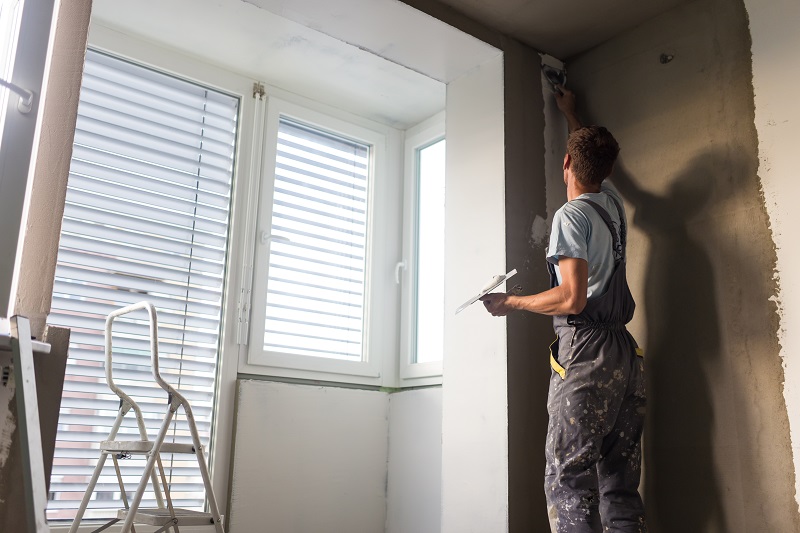Plastering refers to the process where coarse surfaces of any wall or ceiling roofs get changed or are rendered to provide smoothness. In the beginning wet substances or materials are spread all over the brickworks or block after which suitable equipment’s are used in making the surface smooth. The main objective of plastering is basically to obtain smooth and hard surfaces which could be painted over in order to provide great aesthetics. A person who is involved in plastering walls and forms layer after layer to create plasterwork or plastering on walls is known as a plasterer.
When it comes to the history of plastering it can be traced back to the most ancient times where plastering was considered to be one of the ancient techniques of handicraft that was employed in connection to the building operations. The earliest evidence that we can of course find is when primitive men used sticks in building a certain structure and then plastering it with mud. Over the course of time more lasting material was found out instead of just mud or slime that could be used in plastering.
It is in the construction of pyramids that we see Egyptians using the plaster of Paris which was made from calcined gypsum in order to make the structures last even longer. No wonder the pyramids stood the test of time even after 4000 years. Back then plasterer used the same kind of method that we use now a day too.
Tools And Materials Used By A Plasterer
When it comes to plastering, plasterer makes use of many different tools and objects to get their work done more efficiently. The workmen make use of laths, lath nails, sand, plaster of Paris, lime, et cetera.
- Laths refer to the wood laths that are narrow strips of wood which comprises either American or Baltic fir. The thicker the laths are the more they are used in the ceilings in order to stand the extra strain while the thinner laths are mostly used in partitions. Earlier laths were made by hands however presently they are made using machines.
- Lime refers to the substance that the plasterers use for internal plastering. They are either made from chalk, oyster shells or from pure limestones. They are also known as chalk or rich lime, pure or fat lime. Hydraulic lime is chiefly used in external work.
- Hair is the material that is used basically as a binding medium and helps in giving strength to the material. Primarily horsehair was the substance that was used mostly as a binder and was very easily available before the development of motor cars.
Requirements For Becoming A Great Plasterer
If you are looking to become a great plasterer there are of course a few requirements that you would need to fulfil in order to become a master in what you do.
- The first step is to asses your strengths and talents. You would have to keep in mind that becoming a plasterer can be quite a demanding as well as a rewarding occupation. Before you start working towards your goal of becoming a plasterer consider your all of your strengths and preferences.
- You do not need to graduate from a high school to pursue this career, but you do need a general education diploma in order to start your apprenticeship.
- Getting in shape is very important. A great plasterer needs to have a lot of physical strength and stamina. They need to be able to focus easily. They should have a great hand and eye coordination along with dexterity and agility.


Plasterers are craftsmen who use plaster, a material made of gypsum and water, to cover walls and ceilings. The plaster is applied in successive layers, called coats, until it is the desired thickness. It is then smoothed and polished to a finish. Plastering is often used to cover up irregularities in the surface of a wall or ceiling. Thank you for the detailed information.